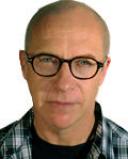Cognition
Creative Thinking is no Longer an Option, It's Essential
Universities require students who can think creatively
Posted February 20, 2017
The nine school pupils were ambitious and wanted good exam results, so they carried out an audacious theft from their school. They stole keys from teachers, placed lookouts, broke into school cabinets and stole coveted documents. The way to get good results, they reasoned, was to see the questions in advance. They stole the final higher-level math exams. Eventually their theft was discovered and the pupils of the local high school in Hanover, New Hampshire were arrested and charged by the police.
The reaction of the parents was interesting. At first, many parents couldn’t understand what their children had done wrong. Then they became angry. In their eyes all their children had done was demonstrate a commitment to achieving good exam results. The pupils explained they felt under huge pressure from their parents, school and society to get high grades. Academic achievement determined a person’s chance of a successful life, they believed. The pupil’s anxiety reflected the academic system’s obsession, not with learning but with passing exams.
Exams are about memorizing information, then testing pupils to see what they remember. Once the exams are over students can forget most of the information because it’s the result that counts. As a lecturer at the University of the Arts London I’m acutely aware of the limitations of the exam system. In my classes I set about trying to get them to unlearn most of what they have learnt at school. The school curriculum for art as with all subjects, is prescriptive. They might study an Impressionist artist such as Monet and then try to copy and reproduce their technique. Schools don’t teach students how to think creatively, they teach skills. The reason is that skills are easy to measure but real creativity is difficult to assess. Schools view creative thinking with suspicion because it is disruptive. It involves asking questions and challenging orthodoxy.
Are exams a useful way of assessing subjects such as science and math in schools? The university lecturers in those subjects seem to believe they are not. For the last two years I’ve been teaching the kind of creative projects I teach at Central St Martins College of Art to Applied Medical Science students based at the Royal Free Hospital in London. Why would a science course devote several days throughout the year to creativity? Because medical science is more than an academic subject, it has to be applied to real people in real situations. Hospitals rarely deal with textbook patients. Patients often have a unique combination of problems. Hospitals found it isn’t enough for their staff to know the facts; they need to be problem solvers. Hospitals have noticed that the most successful students are not satisfied with the status quo, they want to improve things. That’s where I come in. To improve a medical procedure, operation, equipment or treatment you need to create alternatives and that requires new ideas.
We live in a creative culture, and even science demands a constant stream of new ideas. Everyone needs to think creatively whether they’re an architect designing a building, a scientist inventing a new medicine, an architect designing a building, a headmaster organizing a school fete or a plastic surgeon devising a new procedure. The future belongs to creative thinkers who understand design thinking and can harness its potential.
‘What abilities will someone need to succeed in 5, 10, or 15 year’s time?’ is a question I ask myself when I devise projects at the Royal Free Hospital or Central Saint Martins. Colleges and universities used to teach students skills and then, out in the world, they applied them. But culture sped up. Soon, in the three years it took a student to reach the workplace, their skills were out of date. The pace of change is so fast; skills are of little use without the ability to use them in conjunction with creative thinking. As a university tutor, to enable my students to survive and prosper in our new culture, they need to be ‘ideas people.’
My role as a university tutor now focuses on helping my students to become people who can generate ideas to solve problems. In the industrial era, they learnt a skill and were set up for life. In our post-industrial era, a skill can become redundant as it’s being learnt. Ideas people are more versatile because they are not tied down by their skillset. To be at home in the world of the future, students will need to be an adaptable, open minded, problem solver, communicator, inventor, artist and entertainer. If this is the case for students, it must also be the case for the rest of us. For this reason I have shared 100 conceptual thinking tasks, similar to those I’ve set my art and medical students, in a new book ‘Ideas Are Your Only Currency.’ The real currency of our time isn’t money. It’s ideas. For this reason, the exercises in Ideas Are Your Only Currency are designed to encourage you to think beyond what is accepted and conventional. Being a creative thinker is no longer an option, it’s essential.
Ideas Are Your Only Currency
The Art of Creative Thinking
Foyles blog, Rod Judkins
References: Losing Our Moral Compass, Psychcentral, Kalman Heller, PhD
References
Heller, Kalman PhD, Losing Our Moral Compass, Psychcentral


